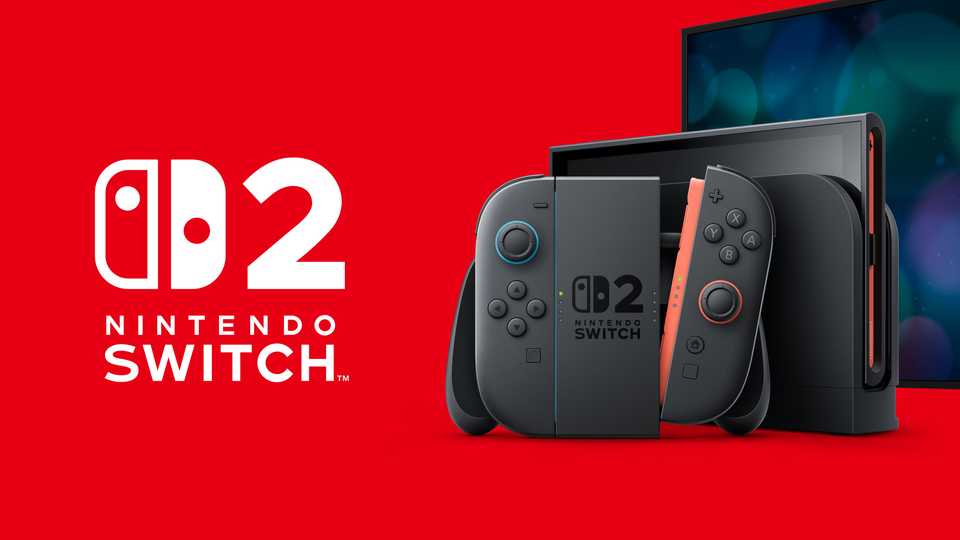Nintendo Switch 2
Nintendo are releasing the Switch 2 games console next month, and traditionally they don’t go with the fastest most cutting edge hardware, and instead focus on a system that’s more efficient, portable and keeps the games fun.
The specs for the system have recently been released, Lets take a look at what the device is capable of and how it compares to the original Switch.
| Switch 2 | Switch 1 | |
|---|---|---|
| CPU Architecture | 8x ARM Cortex A78C | 4x ARM Cortex A57 |
| CPU Clocks | 998MHz (docked), 1101MHz (mobile), Max 1.7GHz | 1020 MHz (docked/mobile), Max 1.785GHz |
| CPU System Reservation | 2 cores (6 available to developers) | 1 core (3 available to developers) |
| GPU Architecture | Ampere | Maxwell |
| CUDA Cores | 1536 | 256 |
| GPU Clocks | 1007MHz (docked), 561MHz (mobile), Max 1.4GHz | 768MHz (docked), up to 460MHz (mobile), Max 921MHz |
| Memory/Interface | 128-bit/LPDDR5 | 64-bit/LPDDR4 |
| Memory Bandwidth | 102GB/s (docked), 68GB/s (mobile) | 25.6GB/s (docked), 21.3GB/s (mobile) |
| Memory System Reservation | 3GB (9GB available for games) | 0.8GB (3.2GB available for games) |
When the Switch 1 was released in 2017, Nintendo suggested that the CPU architecture was a custom design specifically for the console. In reality, the chip was a regular Cortex A57.
The Cortex A57 is a RISC (Reduced Instruction Set Computing) CPU, which is designed to milk out performance in embedded systems while maintaining performance and power efficiency, which is exactly what you need in a portable games device. This is different to the CISC (Complex Instruction Set Computing) instruction sets which handle more complex instructions and are found in general purpose CPUs from AMD & Intel.
The 4x refers to the number of cores (more cores means more task processioning in parallel) and the same CPU can be found in other devices that were released around the same time including the Samsung Galaxy Note 4 and the Qualcomm Snapdragon 810 (which is a chipset in its own right that was built using 4 A57s in a “big.LITTLE” configuration!).
The Switch 2 uses the Cortex A78C, with twice as many cores for better parallel processing, higher efficiency and better power management which is the holy grail of these SoC devices, and higher L1, L2 & L3 caches which is a fancy way of saying “high speed memory units that are built into the chip itself” which are used for frequently accessed data.
A CPU clock is a measurement for how fast a processor can execute instructions per second, and this is measured in megahertz (MHz) and gigahertz (GHz). The higher the clock speed, the faster the processor can process tasks.
The Switch 2 has a slightly faster clock speed compared to the Switch 1, but not much. This might be surprising, but its been done as a trade off. The CPU itself is doing all of the heavy lifting, so the clock speed as been maintained to keep up with the heat, power consumption and efficiency (and even the small form factor!).
We have already talked about cores, but it might be interesting to note that the dev box gives developers access to more cores to help with debugging, optimization, and future-proofing.
The GPU is primarily used for high intensity graphical rendering, and they can handle the higher speed graphical computations and parallel workloads. This is different to the CPU which is better on complex calculations and overall system management.
The Switch 1’s Maxwell architecture (which was introduced in 2014) is also used in the consumer graphics cards belonging to the Nvidia GeForce GTX 900 series. For Switch 2, Nintendo are keeping up with their relationship with Nvidia and upgrading to the Ampere architecture which is the same used in the GeForce RTX 30 series. This leap will give the Switch 2 real-time ray tracing and “Ai driven enhancements” if its needed - shudder.
A CUDA core is a processing unit that is specific for Nvidia GPUs and handles parallel computing tasks. This is essential for graphics rendering, anything AI related or involving scientific simulation. There is more bang, more buck here, and the Switch 2 and upped the ante 6 fold.
in the same way a CPU has a clock speed, the GPU has the same thing and they both work together to determine the overall system performance.
Notice that the GPU clock speed is significantly higher in the Switch 2 (1.4GHz max vs. 921MHz max)? this is because Nintendo are prioritising graphics performance, and relying on the newer A78C CPU architecture to do more with less hence the lower CPU clock speed.
Finally, on the memory side, Switch 2 has a wider memory interface (128 bit vs 64bit ) meaning it can handle more data per cycle, which improves efficacy. The higher memory bandwidth allows for faster loading times and smoother textures and with more memory allocated for games (9GB vs 3.2GB) you can expect larger worlds, higher quality assets and better multitasking.
I’m super excited to see what this device can do, as for a part full-on and part handheld console releasing in 2025 I think Nintendo really have got the balance and trade-offs pretty much perfect here in terms of milking out performance whilst remaining as efficient as possible.
I’m excited to see what games will take full advantage of this hardware - Metroid Prime 4, anyone?
